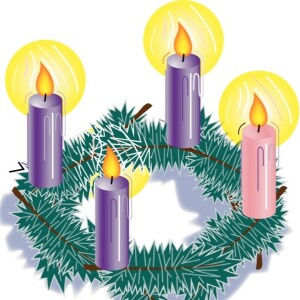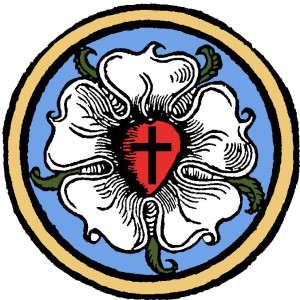
The Advent season and a whole new Church Year begin this Sunday, using readings from Series B in the three year series of readings. The word “Advent” is from a Latin word meaning “to come to,” and we focus primarily on preparations for Christmas and the birth of Jesus, God the Son who became man for us to be our Savior, born in Bethlehem. Advent can also emphasize other “comings” of Jesus, as we will see in the readings for this week.
Advent used to be a more “penitential” season, as we also thought more about our sins and repented for them and remembered how they were the real reason that brought Jesus into this world, to be our suffering Servant and Savior and paying the penalty for our sins, for our sake. The color of the season was purple, like in the Lenten season, and we sang no “Alleluias” until Christmas when Jesus was born. In more recent times, the Advent color is blue in many churches, and we sing joyous Christmas carols much sooner.
We still see the call to repentance and God’s forgiveness in Christ in some of our Advent readings, though. In the Old Testament lesson, Isaiah 64:1-9, Isaiah wishes that the Lord would “rend (rip open) the heavens and come down,” as He had done with “fire” and “quaking” at Mt. Sinai long before. Isaiah admits that God’s chosen people had been living in sins for “a long time,” with “polluted garments” and “not calling in God’s Name” as they should. He prays that the Lord would not “remember their sins forever,” but “look upon them” with mercy.
The Psalmist Asaph has a similar plea for the Lord’s help in Psalm 80:1-7, asking twice: “Restore us, O God; let Your face shine, that we may be saved.” His people had suffered much, with “tears to drink in full measure” because of their sins, and their “enemies laughed” at them. He asks God to “give ear,” to hear and “stir up His might and come to save them.”
God did send His Son, Jesus, of course, and there are two choices for a Gospel lesson, both from Mark, from which most Gospel readings this church year will be. Mark 11:1-10 tells of the “coming” of Jesus into Jerusalem, with people putting down palm branches in honor of Him and saying that He came “in the Name of the Lord” and connecting Him with the Kingdom of His ancestor, David. Jesus is a King, but He comes riding on a lowly donkey to suffer and die for the sins of His people and the whole world, later that week. The alternate Gospel, Mark 13:24-37, tells of another “coming” of Jesus, as He returns to the earth on the last day, when “heaven and earth will pass away,” but God’s “elect,” believers in Him, will be gathered up to everlasting life. No one on earth knows when that day will come, and Jesus calls us to “stay awake” in faith, trusting in Him and His saving work for us.
The Epistle lesson is from 1 Corinthians 1:3-9. Paul gives thanks that “the grace (and peace) of God in Christ Jesus “ had come to many in Corinth. (This is another way that Christ comes, as He has come to us and brought us the “gift” of faith in Him through His Word, “the testimony about Him,” and the “gifts” of Baptism and the Lord’s Supper.) Paul also speaks of the coming of Christ on the last day, “the revealing of our Lord Jesus Christ.” “God is faithful” and will “sustain us to the end,” and we will be counted “guiltless” on Judgment Day, through what Christ has done for us.
More Episodes
 2023-02-21
2023-02-21
 9
9
 2023-02-21
2023-02-21
 14
14
 2023-02-15
2023-02-15
 12
12
 2023-02-15
2023-02-15
 15
15
 2023-02-07
2023-02-07
 9
9
 2023-02-07
2023-02-07
 17
17
 2023-01-29
2023-01-29
 8
8
 2023-01-29
2023-01-29
 17
17
 2023-01-25
2023-01-25
 6
6
 2023-01-25
2023-01-25
 12
12
 2023-01-23
2023-01-23
 10
10
 2023-01-23
2023-01-23
 8
8
 2023-01-11
2023-01-11
 13
13
 2023-01-11
2023-01-11
 12
12
Create your
podcast in
minutes
- Full-featured podcast site
- Unlimited storage and bandwidth
- Comprehensive podcast stats
- Distribute to Apple Podcasts, Spotify, and more
- Make money with your podcast
It is Free
- Privacy Policy
- Cookie Policy
- Terms of Use
- Consent Preferences
- Copyright © 2015-2024 Podbean.com






